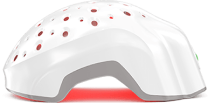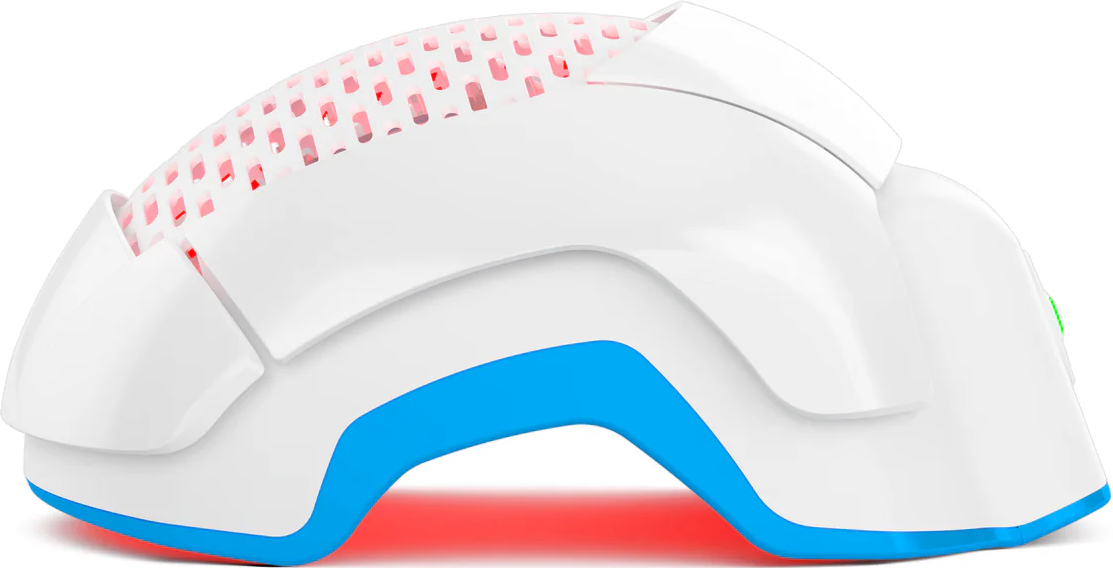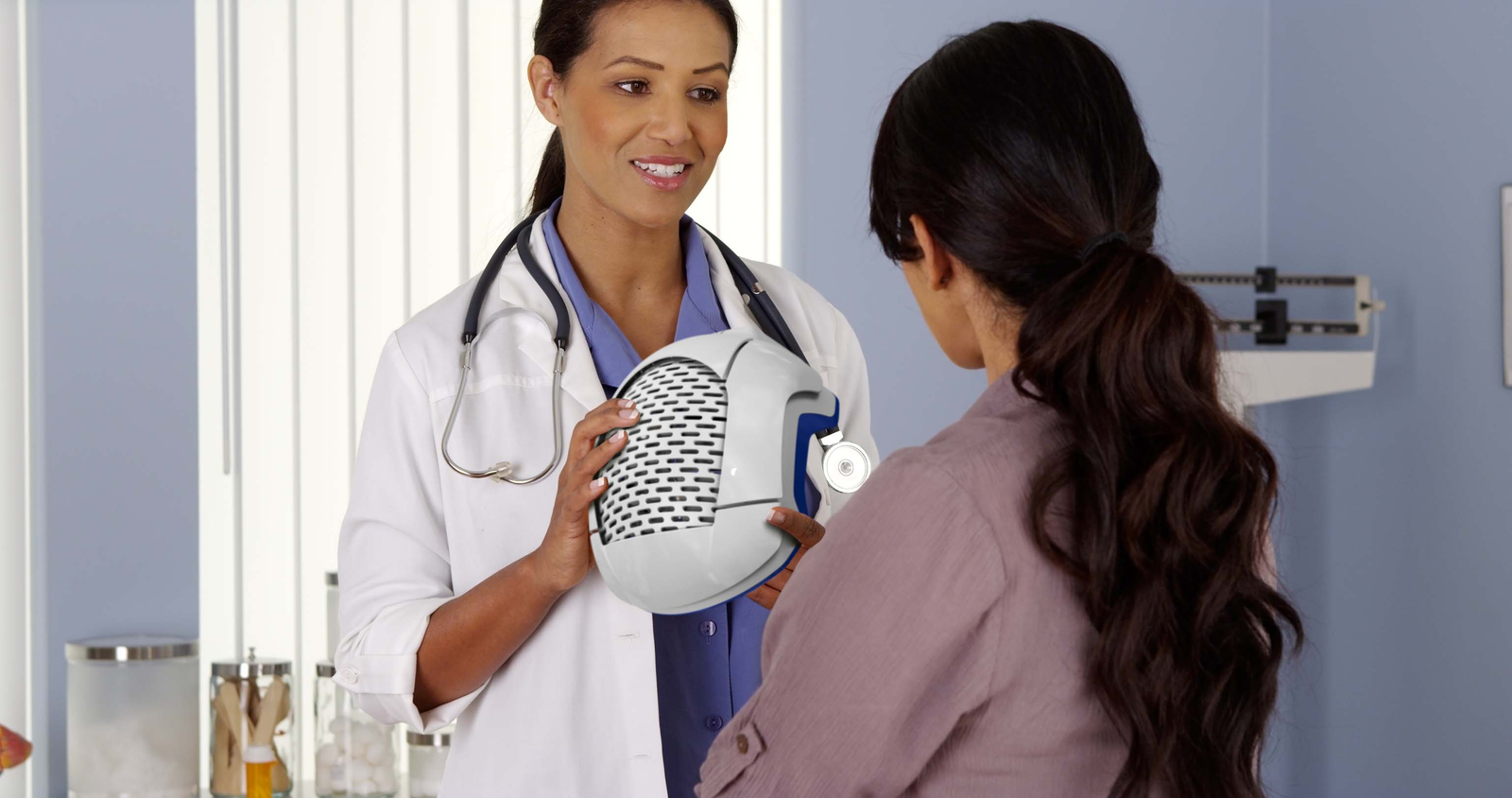A real Laser Phototherapy (LPT) device uses true medical‑grade cold lasers (Class 3R), delivers wavelengths shown in clinical research, has full‑scalp coverage, and is FDA‑cleared for treating androgenetic alopecia. Many imitation devices use LEDs, inadequate energy output, or no clinical backing at all. The good news is: once you know what to look for, telling the difference becomes surprisingly straightforward.
What Is Laser Phototherapy (LPT)?
LPT refers to the use of low‑power, non‑thermal lasers to influence hair follicle activity at the cellular level. The light interacts with follicular cells in a process sometimes described as photobiomodulation. In research, this has been shown to support a shift from resting phase to growth phase and help prolong the growth period.
Learn more on how LPT helps stop hair loss and stimulates new hair growth.
A randomized, double‑blind clinical trial on men and women with androgenetic alopecia found significant increases in terminal hair density when LPT was used consistently over several months.
Another systematic review looking at multiple home‑use laser devices also reported positive treatment response when compared to sham devices.
So yes, the method itself is real. But many devices imitate the look of LPT without the science.
And that is where people get misled.
Why So Many Fake or Ineffective Devices Exist
You’d think something involving lasers would be protected against imitation. But the problem is: LEDs can be made cheaply, and LEDs glow red just like lasers do. To the eye, they look similar. To a hair follicle, they are not the same.
Some manufacturers lean on influencer posts, dramatic before‑after photo edits, and vague emotional testimonials. Meanwhile, the device itself may not provide the wavelength, energy, or coverage necessary to interact with follicle biology at all.
Hair loss is emotional. People want something that works. And that makes it easy for low‑quality devices to slip in.
How to Tell if a Device Is Real or Fake
1. Check Whether the Device Uses Lasers, Not LEDs
Lasers emit coherent, focused light. LEDs emit diffuse, scattered light. The difference affects how deeply light reaches the follicle.
Clinical studies supporting hair regrowth used laser diodes, not LEDs.
If the product page keeps saying “light therapy” but never says laser diodes, that’s a red flag.
Also Read: Laser vs LED for hair growth
2. Look for Class 3R Cold Laser Classification
Real LPT devices use Class 3R cold lasers (≤5 mW), meaning they do not heat or burn the skin.
These are the same category used safely in multiple dermatology tools and hair restoration studies.
If a device calls itself “laser based” but does not state Class 3R or optical power output, caution is healthy.
3. Check for the Wavelength (Most Research Uses ~650–680 nm)
The wavelength range matters because it influences how light interacts with follicular chromophores.
Research showing increased hair counts used wavelengths around:
When a product does not list its wavelength at all, or lists something extremely broad, it’s likely not built for therapeutic use.
4. Look at Scalp Coverage, Not Just Diode Count
Some cheaper devices cluster lights in a narrow arc. The result is patchy exposure, leaving large regions untreated.
Consistent coverage across the crown, midline, and temporal regions matters.
Even distribution > High diode number.
5. Check the FDA 510(k) Clearance
A real LPT device for hair loss must be FDA‑cleared as a Class II medical device for androgenetic alopecia.
This is how you check:
1. Go to the link below:
Check FDA clearance
2. Search the manufacturer or model
3. Confirm:
- Indication: hair loss treatment
- Device category: laser phototherapy / low‑level laser device
- Classification: Class II
If the brand tells you “we’re working on approval”, step slowly away.
How Long Should LPT Take to Show Changes?
In clinical trials, visible improvements often appeared between 16 to 26 weeks of consistent use.
Hair growth works on cycles. Any device promising something fast is not being honest about biology.
This is one of the simplest fake‑device filters, honestly.
Where Theradome Fits Into This Conversation
Theradome was the first FDA‑cleared wearable LPT device for home use. Prototype development began in 2008, and clearance was granted in 2011.
What differentiates it:
- Uses true Class 3R cold lasers, not LEDs
- Delivers full‑scalp coverage (not just a strip or patch)
- Provides clinically documented wavelength ranges
- Designed specifically for androgenetic alopecia in men and women
The clearance is publicly searchable. No need for dramatic language. Just clarity.
Conclusion
Spotting a real LPT device is less about memorizing specifications and more about knowing what must be present: lasers, wavelength clarity, scalp coverage, and FDA 510(k) clearance for hair loss treatment. When those pieces are there, LPT becomes a safe and evidence‑supported at‑home option for many people with androgenetic alopecia. When those pieces are missing, the device is usually more of a glowing hat than a therapeutic tool. So take your time. Look past the lighting and the marketing voice. Trust what is traceable.






















